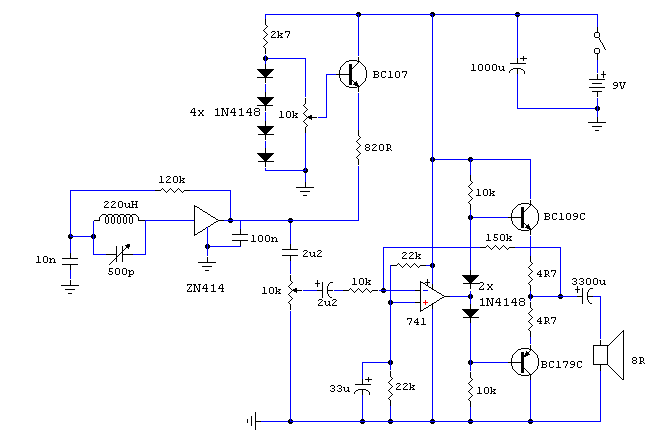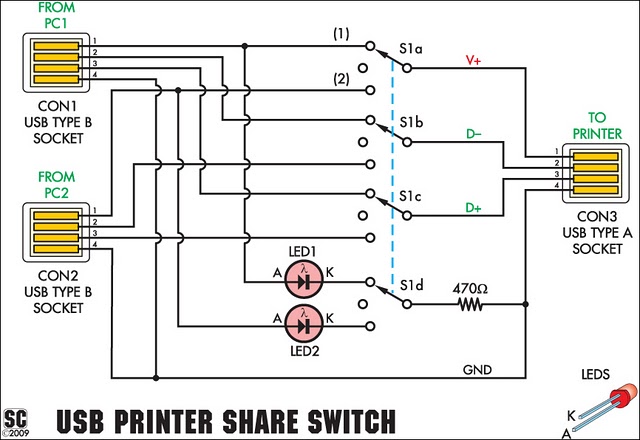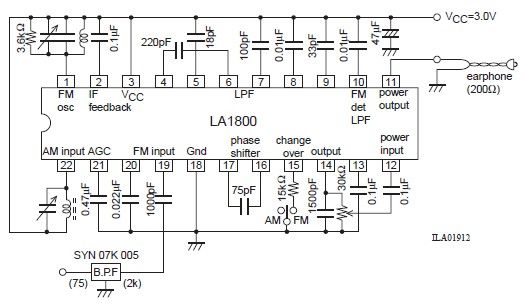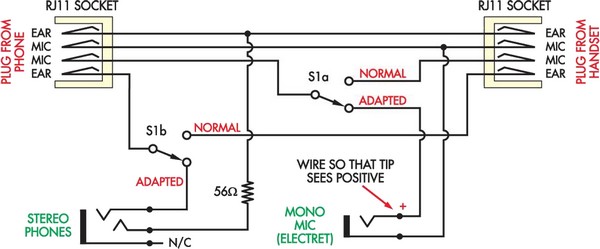
PC parallel port Null Printer Adapter
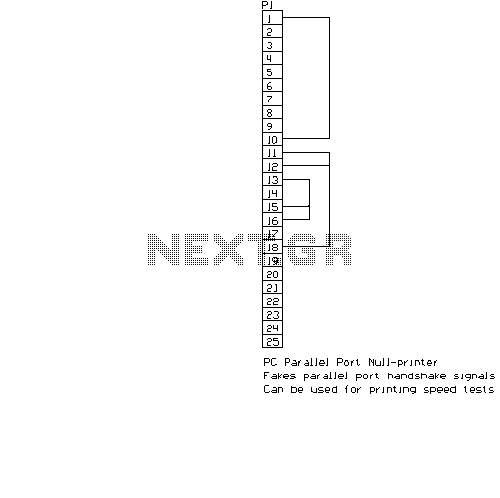
This circuit is a simple adapter for PC parallel port to think that there is a printer connected to computer. This adapter is useful for testing printing speed with different software and as a part of your own designs. You can use this circuit to connect your simple circuits to the parallel port. Usually many home-made circuits use parallel port in a way which you have to use direct I/O commands to control the parallel port to be able to communicate to your circuit. Unfortunately this approach is not always possible, because some operating systems prohibit the programs from directly controlling the computer hardware. More: With this adapter you don't have to worry about generating handshaking signals in your own circuits. This simple circuit consists of only a few wires connected to the parallel port connector and it makes the computer think that there is a real printer connected to the parallel port and accepting the data. This circuit works using the following principles: Busy and paper out signals which normally come from the printer have to be kept low, so they are tied to ground. Select and error signals which normally come from the printer must be kept high, so they are connected to the reset output in the parallel port. Acknowledge signal is directly driven from the strobe line. In this situation, you might want to use standard operating system printer printing functions for sending data to your circuit, but it does not work because your circuit does not generate the handshakes that are needed.
The described circuit functions as an adapter that simulates a printer connected to a PC's parallel port. This is particularly useful for developers who wish to test various printing software or incorporate parallel port communication into their designs without the complexities of direct hardware control. The adapter is constructed using a minimal number of wires, which simplifies the design and implementation process.
To ensure proper functionality, the circuit manages several signals from the parallel port. The Busy and Paper Out signals, which indicate the printer's state, are pulled low by connecting them to ground. This action informs the computer that the printer is ready to receive data. Conversely, the Select and Error signals are maintained high, linking them to the reset output of the parallel port. This configuration allows the computer to recognize the adapter as an active device.
The Acknowledge signal, which is crucial for data transmission, is driven directly from the Strobe line. This arrangement allows the adapter to respond appropriately to data being sent from the computer, facilitating communication without the need for generating handshaking signals within the user's circuit. However, it is important to note that while the adapter allows for the use of standard operating system printing functions, it does not inherently support the necessary handshakes, which may limit its compatibility with certain applications or software that rely on these signals for proper operation.
Overall, this simple yet effective circuit serves as a bridge for connecting various circuits to a parallel port, enabling easier communication and testing while circumventing some of the limitations imposed by operating systems on direct hardware access.This circuit is a simple adapter for PC parallel port to think that there is a printer connected to computer. This adapter is useful for testing printing speed with different software and as a part of your own designs.
You can use this circuit to connect your simple circuits to the parallel port. Usually many home-made circuits use parallel port in a way which you have to use direct I/O commands to control the parallel port to be able to communicate to your circuit. Unfortunately this approach is not always possible, because some operating system prohibit the programs to directly control the computer hardware.
With this adapter you don't have to worry about generating handshaking signals in your own circuits. This simple circuit consists of only few wires connected to parallel port connector and it makes the computer to think that there is a real printer connected to parallel port and accepting the data. This circuit works using following principles: Bysy and paper out signals which normally come from printer have to be kept low, so they are tied to ground.
Select and error signals which normally come from printer must be kept high, so they are connected to reset output in parallel port. Acknowledge signal is directly driven from strobe line. In this situation you might want to use standard operating system printer printing functions for sending data to your circuit, but it does not work because your circuit does not generate the handshakes that are needed.
🔗 External reference
The described circuit functions as an adapter that simulates a printer connected to a PC's parallel port. This is particularly useful for developers who wish to test various printing software or incorporate parallel port communication into their designs without the complexities of direct hardware control. The adapter is constructed using a minimal number of wires, which simplifies the design and implementation process.
To ensure proper functionality, the circuit manages several signals from the parallel port. The Busy and Paper Out signals, which indicate the printer's state, are pulled low by connecting them to ground. This action informs the computer that the printer is ready to receive data. Conversely, the Select and Error signals are maintained high, linking them to the reset output of the parallel port. This configuration allows the computer to recognize the adapter as an active device.
The Acknowledge signal, which is crucial for data transmission, is driven directly from the Strobe line. This arrangement allows the adapter to respond appropriately to data being sent from the computer, facilitating communication without the need for generating handshaking signals within the user's circuit. However, it is important to note that while the adapter allows for the use of standard operating system printing functions, it does not inherently support the necessary handshakes, which may limit its compatibility with certain applications or software that rely on these signals for proper operation.
Overall, this simple yet effective circuit serves as a bridge for connecting various circuits to a parallel port, enabling easier communication and testing while circumventing some of the limitations imposed by operating systems on direct hardware access.This circuit is a simple adapter for PC parallel port to think that there is a printer connected to computer. This adapter is useful for testing printing speed with different software and as a part of your own designs.
You can use this circuit to connect your simple circuits to the parallel port. Usually many home-made circuits use parallel port in a way which you have to use direct I/O commands to control the parallel port to be able to communicate to your circuit. Unfortunately this approach is not always possible, because some operating system prohibit the programs to directly control the computer hardware.
With this adapter you don't have to worry about generating handshaking signals in your own circuits. This simple circuit consists of only few wires connected to parallel port connector and it makes the computer to think that there is a real printer connected to parallel port and accepting the data. This circuit works using following principles: Bysy and paper out signals which normally come from printer have to be kept low, so they are tied to ground.
Select and error signals which normally come from printer must be kept high, so they are connected to reset output in parallel port. Acknowledge signal is directly driven from strobe line. In this situation you might want to use standard operating system printer printing functions for sending data to your circuit, but it does not work because your circuit does not generate the handshakes that are needed.
🔗 External reference
